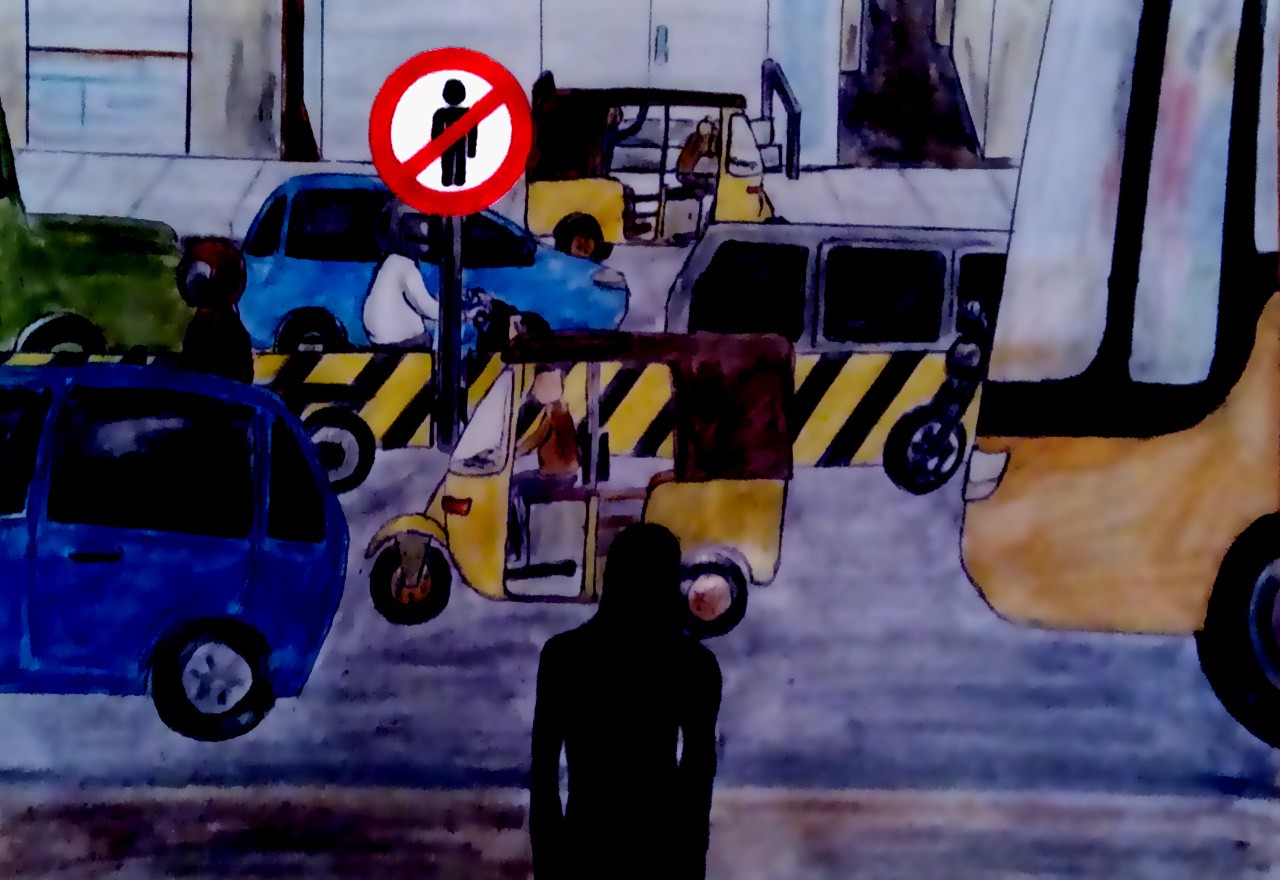Road Rules
No jaywalking allowed? Actually, roads were for people. Here’s how the cars took over.

No jaywalking allowed? Actually, roads were for people. Here’s how the cars took over.
The city centre of Bogotá is quiet. Well, quieter than you might expect. The low purr of engines and the shrill honk of horns are distant sounds. Rather, much — or really all — of the sound comes from people: talking, laughing, singing together.
You could take a leisurely walk around the square, browse the wares on display at an open stall, even stop to feed some birds while you’re there. You could pause to watch the nimble cyclists weave in between crowds and around people with skilled dexterity.
You could not, however, waver in your steps as you admire a passing car. Mostly because there are none there.
In one weekend in 1972, Jaime Lerner managed to fully pedestrianize the main shopping street in the city of Curitiba, Brazil. He was then the mayor of the city. But despite his position of power, he had to do his operation covertly — over the weekend, while the courts were closed. There was so much opposition from local businessmen, he feared they might get him fired via a lawsuit.
By Monday night, the mayor was asked to make the change permanent. Businessmen found their businesses were actually faring better than usual, and the locals appreciated the peace offered by their new, car-free street.
It wasn’t apparent at the time, but Jaime Lerner had just begun a revolution. His example was followed in many other places — including Madrid, Gangtok, and, of course, Bogotá.
The Mumbai-Pune highway is a sleek grey strip of asphalt. It is six lanes wide and stretches for over ninety kilometres. About 40,000 cars journey along its length every day, most at around 100km per hour or higher.
Along the entirety of its length, and running parallel to the road, is a barrier. In some sections it is a chain link fence, in others a low concrete ledge. No cars can enter the road anywhere other than the two entry points at either end.
Locals that live in villages along the road are forced to detour or drive extra to get around. Those crossing on foot must use designated overbridges placed at regular intervals.
This road, it is clear, is meant solely for cars.
Once upon a time, a road was a public space.
Imagine children running around, playing a game. Imagine vendors hawking their wares in open-air stalls. Small groups of people stopping to chat, on their way to somewhere else. And, some people with bedspreads who stopped for the night.
It wasn’t just people. In olden days, roads had enough space also for goats, cows, donkeys, and the occasional dog.
Then came cars.
Cars were elite horse-carriages that ran on petrol. Key word: elite. Until 1920, only the very rich or the very royal (or both, in most cases) owned cars. Cars were status symbols. Cars were playthings to be bragged about, but rarely used.
Enter Henry Ford. In 1920, he developed the Model T and sold over a million units in twelve months. His conveyor-belt method of production had transformed the car: it was not a mere ‘plaything’ anymore, but a vehicle with endless practical uses.
Over the course of the ‘20s, other companies like Chrysler and Renault also entered the market. We haven’t looked back since.
In 2018, cars are faster, sleeker and smoother than they were back then. But while most cars are no longer just playthings for the rich, some still are. In fact, the novelty of cars has never really worn off. The rich still compete to buy the fastest, the sleekest, and the coolest cars on the market. The latest luxury sedan, the fastest four-wheel drive, or the Tesla which will drive for you and run for you and is the car of the future.
The problem though, with cars getting faster, sleeker, and smoother is that people drive them that way. And with greater speed comes greater responsibility — or danger.
Road accidents are a major problem today. In fact, in India, one person dies every four minutes because of them. That’s 131,400 people a year — almost the total number of people that ride the Bangalore Metro every day.
Road safety has an obvious answer — neatly marked road edges, clear signboards, speed-bumps at regular intervals — right?
Maybe not.
The town of Drachten, Netherlands, has a really crowded intersection. Two busy two-lane roads, handling 20,000-odd cars per day, not to mention bicycles and pedestrians. This place used to have traffic-lights, road markings, and zebra-crossings — but one fine day, Hans Monderman decided to rip them all out.
Hans Monderman is a traffic engineer — yes, traffic is now important enough to warrant the job title. Mondersman thinks adding safety features can actually make roads more dangerous, rather than less. Well-marked roads lull people into a sense of security, so they don’t pay as much attention to their surroundings. In contrast, if the road was bad, the driver would be forced to remain on high alert.
Like when, in 1967, Sweden switched from driving on the left to the right, accident rates dropped lower than they had in a decade and took over a year to return to pre-change levels. Why? People were being more cautious than usual in response to a new situation.
Monderman applied this principle to the Drachten intersection: now that the signs are removed, people have to concentrate and they drive more carefully. It also makes them more efficient. Traffic moves a bit slowly, but it never comes to a standstill.
Nowadays, Monderman’s favourite trick is to go to the intersection, fold his hands, and walk backwards — without looking — into the oncoming traffic. Not a scratch ends up on him.
Maybe more safety measures don’t really mean more safety.
Of course, most people don’t think that way. With a few exceptions, urban areas have traffic-lights, signboards, and strict road rules people are forced to follow.
Traffic cameras and police forces catalogue speeding drivers. They watch out for motorcyclists without helmets, crossings without zebras, and signal-jumpers without green signals to let them pass. Some parts of China even have facial-recognition software built into the system: they can look at your face as you step on the road, and have a parking ticket ready by the time you reach home.
Yes, today it is clear that cars have won the roads. But do you ever wish you could see a real road, a road as it was originally meant to be?
Perhaps it’s time to go to Bogotá.
Have something to say? At Snipette, we encourage questions, comments, corrections and clarifications — even if they are something that can be easily Googled! You can also connect on social media, or sign up for our email updates here.
